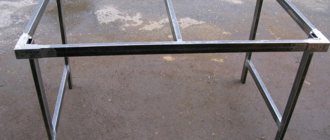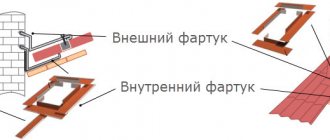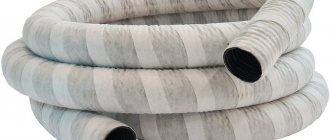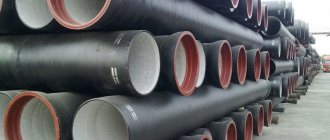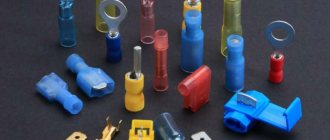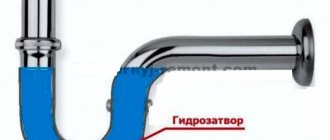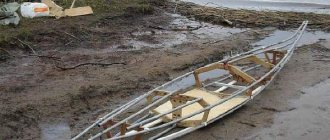Plastic pipes made a real revolution in the laying of communications. If previously metal pipes had to be replaced every 5-10 years, then with the advent of plastic pipes, utilities breathed freely. Plastic pipes do not burst if water freezes in them: they just expand and then return to their previous shape. HDPE plastic pipe does not rust. Corrosion is the main cause of failure of metal pipes.
The production of plastic pipes from HDPE is environmentally friendly, since granules from recycled polyethylene (PE 100) are used. Technical plastic pipes do not harm the environment: low-density polyethylene is resistant to aggressive chemical environments and does not emit harmful substances.
Direct sale of plastic pipes wholesale or retail has been carried out by our plant since its foundation. Plastic pipes from the manufacturer mean several advantages that the buyer receives. The high quality of our products is due to constant monitoring of raw materials and equipment. The low price of plastic pipes is ensured by minimal costs and well-established sales channels. High production speed is made possible by the operation of several lines. And delivery to any point in Russia is carried out only by trusted companies or on our own. Call us at any time: our specialists will promptly fulfill your order and deliver the pipes on time. The catalog of plastic pipes is constantly updated with the introduction of new lines, and upon individual order we can produce pipes of any shape. The technical characteristics of plastic pipes along with prices are indicated in the catalog: choosing the right product will not be difficult.
Application of plastic pipes.
technical plastic pipes , due to their good wear resistance and neutral exposure to high and low temperatures, are widely used:
- For drainage systems of private country houses;
- For ventilation equipment in domestic premises and industrial buildings;
- For the installation of sanitary wells;
- As protective covers when laying electrical and telecommunication networks;
- For equipment of non-pressure sewer systems of country houses.
HDPE pipes have a long service life and are not subject to mechanical damage and chemical influences. The use of plastic pipes is expanding every day. This is facilitated by the low cost of plastic pipes and incredible reliability.
Technical plastic sewer pipes.
Due to their low price, plastic plumbing pipes are in demand for the installation of free-flow sewerage in summer cottages and country houses. Replacing traditional metal pipes for these purposes with plastic ones can significantly reduce the accident rate of underground communications due to corrosion, and avoid expensive repair work involving special equipment. The price of plastic sewer pipes is a significant factor when choosing, but much more important is its exceptional reliability. Plastic sewer pipes will last much longer than steel ones, due to their high resistance to aggressive environments and corrosion. They can withstand higher temperatures. Their internal surface does not require painting; it is smooth, which makes it easier for household waste and debris to move through the pipes, minimizing the possibility of clogging. External plastic sewer pipes made of HDPE are easily assembled with each other using profile sealing gaskets and socket joints. The outer and inner diameters of plastic sewer pipes may vary depending on the design flow.
Technical plastic pipe for optical cable.
One of the important areas of application of technical plastic pipes is the equipment of telecommunication systems, telephone and television cables. Its inner walls have a smooth surface, so the cables laid in it do not encounter resistance. This method of laying telecommunication cables allows you to protect communication lines from mechanical damage, protect them from exposure to open flames (HDPE pipes are not flammable) or high temperatures.
Plastic PE pipes for electrical wiring.
Using plastic PE pipes, channels and protective shells are created for power cables and electrical wires laid in a hidden way, outside buildings or in the ground. This method of electrical wiring is used in industrial premises, warehouse complexes, office and residential buildings. The use of PE plastic pipes for electrical wiring allows you to protect the cable from external damage and prevent the possibility of electric shock to a person if the cable insulation is damaged. Once a short circuit occurs, the plastic PE pipe will prevent combustion.
Plastic plumbing pipes for drainage.
Plumbing plastic pipes are used for arranging rainwater drains in private houses and on personal plots. The low weight and high elasticity of such pipes allow you to quickly, without much labor, install a drain system of any height, at any time of the year. A drain on a house installed using plastic pipes will look beautiful and neat and perform its main function well – draining water.
Ventilation plastic pipes.
Plastic pipes are used to create air supply and exhaust ventilation ducts for residential buildings, industrial and public buildings. Unlike metal pipes, which have roughness near the joints that slow down the air flow in the system, plastic ventilation pipes do not have this drawback. Such ventilation systems are durable, mobile, non-corrosive, and fully comply with hygiene requirements. They allow you to avoid air mass leaks due to absolute tightness at each connection.
Pipes made of plastic, like parts of other products.
The technical shell pipe is also used as a component for pipelines with thermal insulation. Due to its resistance to most chemically active substances, such a plastic pipe is used to protect standard metal pipelines in many industries where there are aggressive environments. In addition, such plastic shells significantly reduce heat loss, increasing the economic benefits of pipeline operation.
How do you like a plastic pipe greenhouse? This non-standard use of HDPE pipes is just one example of where these products can be used. Tubes and table legs can also be made from plastic pipes of various lengths. Depending on the requirements for the product, rigid or flexible pipes are used. A bow and even a catamaran are made from plastic pipes!
Polypropylene single-layer pipes
In construction stores you can find both single-layer and multi-layer products. Pipes of the first type are distinguished by the fact that they contain nothing but polypropylene. They are divided into several types:
- PPH tubes are distinguished by the fact that they can be used in a wide temperature range, but have poor resistance to low temperatures. They also have high resistance to aggressive substances. Tubes are often used to transport technical fluids. Due to their thin walls, they are often used to create ventilation systems.
- The PPB type is highly resistant to low temperatures and flexible. Also worth noting is such a characteristic as high thermal expansion.
- PPR tubing is versatile and can be used at different temperatures. At the same time, they are highly durable. It should be noted that they are able to maintain their shape in various conditions. Since such tubes are environmentally friendly, they can be used to transport drinking water.
Plastic pipe price.
Technical pipes made of plastic are cheaper than similar ones made of other materials. However, in many quality characteristics they are not inferior to metal pipes. The use of PE granules from recycled materials in the production of plastic pipes significantly reduces the cost of the final product, making it possible to reduce the overall cost of work on laying sewers, various telecommunications and electrical networks, and drains. The low price of plastic pipes is also due to the presence of our own production with modern equipment, which ensures low energy costs and high productivity. You can find out how much a plastic pipe costs on our website in the price section (price list) or by calling one of the phone numbers. The price of a plastic pipe depends on the batch size. Wholesale plastic pipes are cheaper than small orders.
Price and selection criteria
Pipes PN-20
Estimated cost of plastic products depending on type and diameter:
- Model PN20, reinforced with fiberglass - 90-1500 rubles per linear meter.
- PN20, reinforced with aluminum foil - 110-2700 rubles per linear meter.
- PN25, fiberglass reinforced - 60-3000 rubles per linear meter.
- PN25, reinforced with aluminum foil - 90-2500 rubles per linear meter.
- Pipes made of cross-linked polyethylene - 50-1700 rubles per linear meter.
When choosing a material for a heating system, you should consider some characteristics:
- Operating conditions, which take into account the properties and composition of the coolant, its pressure and temperature.
- Laying method (open or closed).
- Interaction of product properties with the properties of auxiliary elements of the heating system.
It is important to pay attention to the markings; for heating, PN20 and PN25 products with a reinforcing layer of fiberglass or perforated aluminum are used. The diameter of the material is no less important, because a large diameter will lead to excessive consumption of the coolant, which leads to higher heating costs. A smaller size will reduce the pressure of thermal mass and the quality of heating
A smaller size will reduce the pressure of thermal mass and the quality of heating
The diameter of the material is no less important, because a large diameter will lead to excessive consumption of the coolant, which leads to higher heating costs. A smaller size will reduce the pressure of thermal mass and the quality of heating.
To install a single-pipe heating system, it is recommended to use products with a circumference of 20, 25 and 32 mm: for risers - 25 or 32 mm, for supply to batteries - 20 mm.
For a two-pipe system, the choice of product diameter depends on the length of the sections and the number of heat exchangers.
So, if more than 8 radiators are installed or the length of the section exceeds 30 meters, products with a diameter of 32 mm are used; when installing fewer radiators and connecting 1 battery in a section of less than 10 meters, you can use material with a diameter of 20 mm.
Production of plastic pipes at a plant in the Moscow region.
The production of plastic pipes at our plant in the Moscow region is carried out from high-quality recycled polyethylene granules, which are pre-tested for the declared characteristics. As additional components, various ingredients are added to them, increasing the resistance of the finished product to external influences, giving technical plastic pipes the necessary performance qualities.
The creation of plastic pipes is carried out by the extrusion method - squeezing out the finished product using special nozzles. Thanks to this technology, it is possible to produce pipes of various sections and unlimited lengths. The finished product is formed under the influence of high pressure, pressing it against the calibrating mold. Our plastic pipe plant is capable of producing any quantity of plastic pipe to order. The shape of the pipe can be not only round: square and triangular pipes are not all that our equipment is capable of. The answer to the question: “where to buy plastic pipes of our production?” - extremely simple. You can purchase our products without leaving your home. Just call us and the pipes will be delivered to the specified address. You can save on delivery if you pick up the pipes at your own expense in the Moscow region directly from the factory. You can also order delivery of plastic pipes throughout Moscow: if products of the required diameter and size are in stock, we will deliver the required quantity on the same day.
How small diameter transparent PVC pipes are produced
To create products from polyvinyl chloride, methods such as extrusion and casting are used. The first method involves heating the plastic and then pressing it through a ring-shaped hole.
If the casting method is used, the creation of the pipe occurs in several stages:
- First, the plastic is poured into a special mold in a centrifuge.
- After this, the centrifuge is turned on. After turning it on, the material is evenly distributed along the walls of the mold.
- After the material cools, transparent tubes are obtained.
It should be noted that using transparent products to create a pipeline is not recommended, since there are more suitable pipes for this.
Plastic pipes for the dacha.
Most owners of dachas, country houses, and cottages prefer to buy a plastic pipe for the following reasons: arrangement of an autonomous non-pressure sewer system, creation of a drain and cable laying. There are several advantages of using technical plastic pipes when installing country sewerage:
- It has no restrictions on soil or freezing depth;
- Installation of plastic pipes is carried out in a trench with a shallow depth;
- Light weight reduces the load on supporting structures;
- Installation of a plastic pipe in such a system is done manually (light weight), there is no need to use construction equipment;
- Plastic drainpipes are not subject to corrosion;
- Excellent tightness of all connections;
- To clean the system, simply rinse it with water.
For external drainage systems at the dacha, gutters and drains are pre-installed, and then a plastic pipe is installed. Rubber gaskets are installed in all connections for tightness. Installation of such a drainage system can be carried out even in winter, and it itself can be used for several decades. Plastic pipes for a dacha are indispensable: only with their help can you easily create a sewer system and protect external wiring. When creating sewers, thick-walled plastic pipes are used. To lay the cable, you can use both thick-walled and thin-walled plastic pipes.
Main characteristics
A calibrator is a special device that performs three main functions:
- calibration;
- chamfering;
- adjusting the shape of the pipe end after cutting and other operations.
These activities allow you to prepare metal-plastic pipes for installation of connecting elements. For joining, as a rule, crimp fittings or press models are used.
Today you can find several types of this device, which are used for pipes with different cross-sectional indices
When choosing a calibrator, it is recommended to pay attention to its markings. The diameter of the device can be 12, 16, 20, 26, 33 mm
Such devices facilitate a gradual transition between pipeline elements that have different sizes. The calibrator includes the following parts:
- body made of polypropylene (PP);
- plate with a cutting edge (knife).
Let's consider the main advantages of using such a device when installing metal-plastic structures:
- compactness;
- savings due to the fact that trimming uneven ends of pipeline parts is eliminated;
- ease of installation;
- high speed of work;
- device reliability.
Similar devices are made from different materials and may have differences in design
It is also worth noting that the device is symmetrical for convenient performance of work. Using a calibrator allows you to simplify the installation of the pipeline structure and carry it out as correctly as possible.
Plastic pipes in the apartment and office.
In an office or apartment, technical plastic pipes are used for electrical wiring, computer networks, and for equipping internal drains.
Due to the fact that such pipes are easily installed in concrete walls and do not collapse during prolonged use, they are indispensable for running electrical cables and computer lines in the office. They can be hidden behind plasterboard slabs, suspended or suspended ceilings, or in false floors.
The use of plastic pipes for internal drains in an apartment allows for reliable protection of housing from moisture, condensation and bacteria, and does not create problems during repairs with the replacement of components. To connect plastic pipes, special corners are used to ensure the tightness of the connection. To clean the drain from HDPE pipes when large debris gets into it, special plugs are used.
Plastic profile pipes.
A technical plastic pipe does not have to be round in cross-section. So-called profile technical pipes can have different shapes. It can be a square, a triangle, a rectangle, or a rhombus. Manufacturers even sometimes have to make custom-made plastic HDPE profile pipes in the shape of a star.
Plastic profile pipes are made from low-density polyethylene (HDPE) using a special original nozzle for the extruder, and technologies and modern equipment make it possible to produce such products for kilometers.
Comparison by cost
Self-installation of the presented types of pipes and fittings eliminates the cost of installation services provided by third parties and companies
At the same time, it is worth paying attention to the difference in the cost of the pipes themselves and their components. Metal-plastic pipes and fittings for them are an order of magnitude more expensive than similar products made of PVC and polypropylene for an obvious reason: the main material in them is non-ferrous metals
But to assemble metal-plastic pipelines, you do not need to buy or rent special equipment necessary for assembling polypropylene products. The difference in material costs is important for large volumes of work.
To solve different problems at one site, you can combine pipe connections from different materials; for this, manufacturers produce fittings that connect different types of products.
Manufacturers of plastic pipes in Russia.
The largest volumes of plastic pipes in Russia, which are in great demand in industry, construction and for private consumer needs, are produced today in the Central region, as well as in the Volga and Northwestern regions. The number of enterprises producing such in-demand products is also increasing. This is due not only to the constantly stable growth in demand for plastic pipes, but also to the streamlined organization of their production, which makes it possible to obtain good products without huge investments. Our plant is one of the leading enterprises for the production of plastic pipes.
Manufacturers of plastic pipes in Russia appear and close quite often, which is why constant cooperation is so important. Over the years of our activity, we have gained many partners and a reputation as a reliable manufacturer of technical pipes. Our own production of plastic pipes means low prices for plastic pipes and a guarantee of quality. Why buy plastic pipes from Turkey or China? Order Russian pipes: they are not only cheaper, but also superior to their foreign counterparts!
General description of polyvinyl chloride
Pipes made from the described material are of low cost when compared with iron products. Clear pipes are often used. They can be used in the creation of laboratory equipment and ventilation communications. It is worth noting that they cannot be used at temperatures above 100 degrees. This is due to the fact that the material begins to emit hydrogen chloride, which is harmful to health.
It should be noted that polyvinyl chloride is smooth and repels dirt. Transparent tubes can be installed almost anywhere, as they have good flexibility.
Black plastic HDPE pipes.
The basic color of technical plastic pipes is black. It is in this form that black plastic pipes for sewerage for private homes, for protecting electrical networks and telecommunications, for ventilation and air ducts, and for drains. However, the use of PE granules of various colors makes it possible to obtain HDPE plastic pipes of various shades. Such a color difference will be appropriate, for example, for laying electrical cables in the same wall, but going to different consumers.
Flexible plastic pipe.
The diameter of the plastic pipe determines whether the pipe will be flexible or rigid. Flexible technical plastic HDPE pipes (usually of small diameter) are easy to install. With their help, you can quickly and conveniently assemble any system, be it a watercourse, protection for electrical cables or free-flow sewerage. Flexible plastic pipes, for example, can be easily bent 90 degrees (radially) without heating or breaking when laying a cable route in concrete during monolithic housing construction. To cut such a plastic pipe, you can use an ordinary hacksaw, a simple knife or a special device. Rolled into coils, these pipes are easily transported and stored without taking up much space. Flexible HDPE plastic pipes are usually connected to fittings and components using clamps.
Characteristics of plastic pipes
Thermoplastic polymers are used to manufacture the described products. The production of such pipes is carried out according to the standard, so all products have the same characteristics:
- according to GOST, the melting point of the material is 149 degrees;
- the tensile strength of the plastic should be 35 newtons per square millimeter;
- the linear expansion coefficient of this material should be 0.15 mm/m°C.
The described products may have different diameters. 3 mm plastic tube, for example, is used to create laboratory equipment. For the sewerage or water supply system of a private house, pipes with a diameter of more than 50 mm are used.
Rigid plastic pipes.
Rigid HDPE plastic pipes, unlike flexible ones, can only be used in straight sections. Large plastic pipes are generally rigid and cannot be rolled into coils. You can easily and conveniently lay an electrical cable or telephone line in them. At the same time, accidental damage to the insulation is completely eliminated, thanks to the absolutely smooth inner surface. Very often, rigid HDPE pipes of small diameter are used to lay electrical cables along the external (facade) part of the building to power lighting systems or security alarms. Plastic pipes of large diameters are used in sewer laying. When installed outdoors, it does not crumble under the influence of sunlight and precipitation and does not lose its strength characteristics even in winter. Rigid plastic pipes are usually joined by gluing, soldering or welding. Also, a plastic pipe can be connected using a fitting.
Choosing hoses for a moonshine still: which ones are better, diameter, how to connect, where to buy
In the design of a moonshine still, hoses are needed to supply water to the refrigerator and dephlegmator, as well as to drain the finished moonshine into a receiving container. It is best to use only silicone, as it has the optimal characteristics for our craft. For 95% of moonshine stills, you will need a silicone tube with a diameter of 8 mm (usually the diameter of the fitting is 10, so we install our “figure eight” made of silicone and everything works great).
We invite you to study a number of features related to the selection, purchase and connection of these hoses to the moonshine still. Why are they so better than PVC (polyvinyl chloride) tubes and can polyurethane analogues be used?
What is the best hose for a moonshine still?
You won't believe it. Silicone! Ideally, it should be food grade (IRP-1338), but even ordinary water is washed well after the first distillation and does not stink. Always rinse the tubes thoroughly before use, just in case.
In second place is polyurethane. It also has good food properties, but it is less convenient. It bends poorly, holds uncertainly, does not stretch. Therefore, if you are offered a silicone or polyurethane hose, then give preference to the first option.
The third one is PVC. Polyvinyl chloride quickly begins to smell bad, deform and become tan. It spoils the taste of moonshine over time and is inconvenient to use. It is better to refuse it.
A few places where you can actually buy a good silicone tube:
What does a silicone hose look like and how to distinguish it
Main characteristics and distinctive features of various materials:
- Silicone is transparent, whitish, soft. Stretches well. It does not burn or smoke black, and when heated it emits white ash.
- Polyurethane is usually red or blue (for hot and cold water). It is harder and bends much worse.
- Everything else is PVC or other material that does not suit us.
I have never done this myself, but in the video everything is clearly visible and understandable. Good way!
How to connect a hose to a moonshine still and water
To connect to the moonshine still, we use a fitting. There are two fittings at the reflux condenser and two at the refrigerator. The water supply goes to the lower connection, and the water drainage goes to the upper connection.
Fastening is usually not required, since silicone with a diameter of 8 mm fits normally on a 10 mm fitting
. As a last resort, you can use a metal clamp (for reliability).
The hose can be connected to the tap using a fitting, diverter or sealant cap. All these methods are described in detail in the publication about connecting a moonshine still to water, so we will not dwell on this point.
Rectangular plastic pipe.
A rectangular plastic pipe is one of the types of profile polyethylene pipes. It is made using a special original nozzle for the extruder. The main purpose of this pipe is air ducts, although it can also be used for arranging external watercourses in private homes. Thanks to their rectangular shape, such air ducts are easy to install; they are easily mounted and rest on any surface: walls or ceiling. Rectangular plastic pipes are compactly placed in residential and industrial premises.
Round plastic pipe.
Round plastic pipe is the most common type of product from specialized enterprises. Small diameter pipes (from 20 to 63 mm) made of this material are perfect for laying electrical cables, telephone and computer lines; they can be used to equip internal drainage in an apartment or house.
Round plastic pipes with a diameter of more than 75 mm can be used for external drains of dachas and country houses. They are used to make air ducts in residential and industrial premises. Compared to metal ones, ventilation systems made of plastic pipes are much lighter and more durable, cheaper in price, and look more modern. They can be used in damp rooms and in places with aggressive environmental conditions.
Diameter
One of the most important characteristics is their diameter. When selecting the products described, it is necessary to take into account that they have an outer and inner diametrical cross-section.
It should be noted that Russian manufacturers take the outer diameter as the main parameter. If it is necessary to create a water supply or sewage system for internal purposes, products with a small diameter are usually used. The minimum value can be 16 mm, and the maximum can be 50 mm.
If pipelines are created to carry drinking water, products with a large diameter are used.
Technical non-pressure plastic pipes.
Non-pressure plastic pipes are used for external sewerage - transporting domestic wastewater from buildings and private houses to drain wells. They have a smooth inner surface that prevents the formation of deposits, are highly inert to microorganisms, and perfectly resist wear under the influence of aggressive environments (alkali, acid, etc.). A distinctive feature of such plastic pipes is their increased elasticity, which allows them to be used even at subzero temperatures, after exposure to which they regain their original shape. Another advantage is their low thermal conductivity, which does not contribute to the formation of condensation on the outer surface of the pipes. Sewerage made from non-pressure lightweight plastic pipes is easy to install: they are connected to each other through a socket and a rubber sealing ring.
Advantages and disadvantages
The advantages of PVC pipes include:
- Long service life. The described products can be used for more than 50 years.
- Light weight and size. Thanks to these characteristics, pipes are easily transported and loaded for transportation.
- Easy to install. Even a person who has no experience in carrying out such work can lay transparent polyvinyl chloride pipes.
- Low noise level during use. During operation, the system produces virtually no noise.
- Environmental Safety. The described products are safe for human health, as they do not emit harmful fumes and do not interact with chemically aggressive substances.
- Low thermal conductivity.
- Easy to maintain. Thanks to the transparent walls, the tubes are easy to inspect. At the same time, they are easily cleaned from any contaminants.
All small diameter plastic transparent tubes are not suitable for transporting substances on an industrial scale.
